Global Hydroponics Market - Comprehensive Data-Driven Market Analysis & Strategic Outlook
The global hydroponics market has developed from novelty farm experiment to structured industry that continues to revolutionize how the world conceives food production. It was born out of scientific curiosity in the early part of the twentieth century, when scientists experimented with soilless growing so that they could discover how plants are fed only to become the basis for one of the most sophisticated methods of growing. Initial experimentation during the 1930s and 1940s, primarily in university laboratory space, formed the basis for nutrient solution and water-based plant growing systems that typify hydroponic agriculture. Initially restricted to laboratories and small greenhouses, the practice began to attract the interest of commercial growers who desired to be productive when water or land was scarce.
- Global hydroponics market of approximately USD 5962.1 million in 2025, which is expected to increase with a CAGR of nearly 8.8% until 2032 and holds a potential of over USD 10764 million.
- Aggregate Systems account for nearly 42.4% market share and are leading the market with advanced research, designing innovative products with increased applications.
- Key growth drivers: Soaring demand for pesticide-free and fresh fruits and vegetables, Water and land constraints driving alternative production systems
- Opportunities are: Growth in urban agriculture and vertical farming options
- Key insight: The market is anticipated to grow exponentially in value in the next decade, signaling considerable opportunities for growth.
- The contemporary emergence of the global hydroponics market can be traced back to the technological revolutions of the late twentieth century.
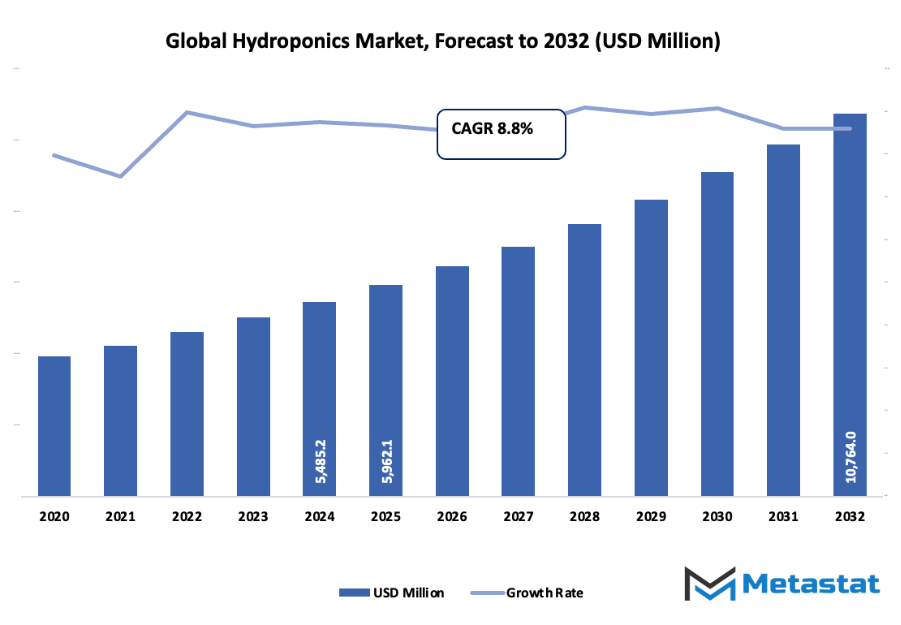
Automation, artificial illumination, and climate control systems allowed growers to regulate crops with precision that traditional agriculture was not capable of. As more and more people transferred to the urban areas, food production close by became the trend, cutting down on transportation and bringing in fresher fruits and vegetables. Europe and North America led massive commercialization of hydroponics through the innovation of the nutrient film technique and designs in vertical farms. Consumer behavior began to drive production planning by the early 2000s. Demand for locally produced and pesticide-free vegetables created new marketplace opportunities for hydroponic farms to sell directly to health-conscious consumers. Startups and conventional agribusiness firms were favored in the trend to invest in modular and scalable modules of growth. Governments all over the globe began to realize Hydroponics as a component of their agricultural innovation policy, with incentives being provided to controlled-environment agriculture. The global hydroponics market now is an active intersection of technology and agriculture. Futuristic development in sensor-based irrigation, data processing, and the use of renewable energy will define its future. The firm will move towards more decentralized systems, such as communities, retailers, and even residential homes growing food. From its origin in science to its modern commercial use, Hydroponics will only expand as an adaptable answer to global challenges of food security and resource management.
Market Segments
The global hydroponics market is mainly classified based on Type, Crop Type, Equipment, Input Type.
By Type is further segmented into:
- Aggregate Systems: Aggregate systems utilize solid growing media like perlite, gravel, or sand to cultivate plant roots. The system provides strength to the plants and assists in effective oxygenation and nutrient uptake. The system is used extensively and is found to be preferred due to ease and the possibility of installation on small as well as large-scale hydroponic farms.
- Liquid Systems: Liquid systems utilize nutrient-rich water without any solid medium to support the plants. The roots will absorb the nutrients directly from the circulating water, and the growth is quicker with greater nutrient uptake. This system is economical and is used most extensively in commercial hydroponic farms for high-value crops.
By Crop Type the market is divided into:
- Tomatoes: Tomatoes are one of the most lucrative crops grown in the world market Hydroponics. Hydroponic systems' controlled environment allows consistent yields and quality fruits to be generated throughout the year. The system also facilitates improved disease control and nutrient control, resulting in higher productivity.
- Lettuce: Lettuce is a good crop for hydroponics because it has a brief growth cycle and is highly water-efficient. Hydroponics provides a consistent supply of clean and pesticide-free lettuce to satisfy the demand for clean and hygienic food by the consumer. Hydroponic systems are used in commercial farms for the purpose of maintaining constant lettuce yields in minimal spaces.
- Peppers: Peppers also highly favor hydroponic growth since it offers nutrient and temperature control. The system favors uniform growth, intense coloration, and sweet pepper as well as chili pepper high yields. Pest issues are reduced in the controlled environment, making Hydroponics suitable for pepper crop production.
- Cucumbers: Hydroponic systems favor cucumbers because cucumbers require ample water and nutrients for them to grow properly. The system gives a continuous supply of water and nutrients, thus presenting quality and high-yielding fruits. Farmers use this method to meet increasing demand for fresh cucumbers.
- Herbs: Basil, parsley, and mint are a few herbs that are grown extremely well in hydroponic systems due to low root systems and rapid growth cycles. The system adds more flavour, aroma, and quality control. Hydroponic herbs are required for medicine and cooking, hence speeding up the growth of this industry.
- Other: Other fruits such as strawberries, spinach, and leafy greens are grown using hydroponic methods on a commercial scale. These crops are well suited for soilless cultivation and give high crops under protected conditions. The method allows year-round production, hence reducing the reliance on climatic conditions.
By Equipment the market is further divided into:
- HVAC: HVAC procedures provide temperature, humidity, and air flow in hydroponic farms. Proper climatic management provides healthy plant growth, along with disease control. HVAC equipment is most important to provide the optimal environment, especially in indoor and commercial-scale hydroponic operations.
- LED Grow Lights: LED grow lights are the hydroponic systems' requirement, especially indoor agriculture. They provide the right spectrum of light that is needed for growth and photosynthesis. LED lights are more durable and energy-efficient, hence the most widely used among hydroponic farmers all over the world.
- Control Systems: Control systems automatically adjust and measure hydroponic procedures. They change water level, nutrient levels, and environmental conditions. They maximize productivity, reduce labor expense, and provide consistency in crop quality.
- Irrigation Systems: Irrigation systems supply water and nutrients to roots. The right amount of irrigation with no water wastage provides healthy growth. Robotic irrigation systems in modern hydroponic systems supply the right amount of moisture and nutrients.
- Material Handling Equipment: Material handling equipment is utilized to move plants, nutrient solution, and materials in hydroponic buildings more effectively. Material handling equipment improves workflow and reduces man labour, which enables faster and more efficient production. Material handling equipment plays an important part in commercial hydroponic farms.
- Other: Other components include sensors, pH meters, and nutrient dosing units that help to deliver successful hydroponic operations. The devices aid in delivering precision and harmony in the cultivation environment for optimal crop development.
By Input Type the global hydroponics market is divided as:
- Nutrients: Nutrients are needed for hydroponic plant growth. The solutions offer equal amounts of nitrogen, potassium, and phosphorus for proper growth. Proper management of nutrients means more yield and quality of the crops.
- Growth Media: Physical support of plant root in hydroponic culture is provided by growth media. Coco peat, perlite, and vermiculite are some of the materials used. The media exhibit effective aeration and water retention capacity, leading to healthy and robust root systems.
- Trace Minerals: Trace minerals such as iron, zinc, and magnesium play a major role in plant growth and metabolism. Although they are present in trace amounts, these metals play a crucial role in plant productivity and health. Proper balancing of these nutrients in nourishment fluids keeps plants at optimal functioning.
- Others: pH regulators, bio-stimulants, and conditioners for water for triggering plant growth are other inputs. These inputs ensure optimal growing conditions are achieved, crop stress and disease resistance are enhanced, thus yielding higher quality produce.
|
Forecast Period |
2025-2032 |
|
Market Size in 2025 |
$5962.1 Million |
|
Market Size by 2032 |
$10764 Million |
|
Growth Rate from 2025 to 2032 |
8.8% |
|
Base Year |
2024 |
|
Regions Covered |
North America, Europe, Asia-Pacific, South America, Middle East & Africa |
By Region:
- Based on geography, the global hydroponics market is divided into North America, Europe, Asia-Pacific, South America, and the Middle East & Africa.
- North America is further divided into the U.S., Canada, and Mexico, whereas Europe consists of the UK, Germany, France, Italy, and the Rest of Europe.
- Asia-Pacific is segmented into India, China, Japan, South Korea, and the Rest of Asia-Pacific.
- The South America region includes Brazil, Argentina, and the Rest of South America, while the Middle East & Africa is categorized into GCC Countries, Egypt, South Africa, and the Rest of the Middle East & Africa.
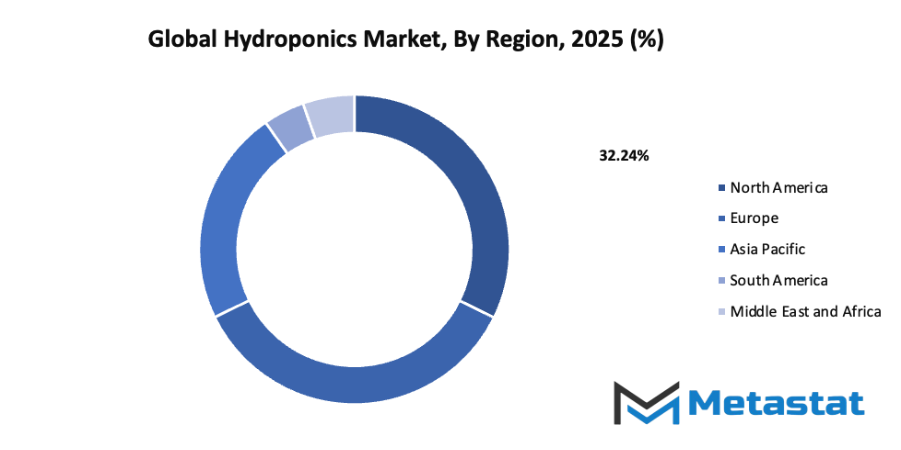
Growth Drivers
- Increasing demand for fresh and pesticide-free produce: The growing preference for healthy and chemical-free food is driving the global hydroponics market. Consumers are becoming more aware of the harmful effects of pesticides on health and the environment, leading to a shift toward clean and safe produce. Hydroponic systems ensure freshness by allowing controlled cultivation throughout the year, unaffected by seasonal limitations. This reliable access to nutritious and residue-free vegetables and fruits continues to fuel the expansion of hydroponic farming practices worldwide.
- Water and land scarcity promoting alternative farming methods: Limited availability of arable land and water resources is pushing agricultural industries to adopt innovative farming techniques. The global hydroponics market benefits from this need as it requires significantly less water compared to traditional farming. Urbanization and industrial growth have reduced farmland, encouraging the use of hydroponic systems in compact spaces. This approach offers sustainable crop production even in regions with poor soil conditions or harsh climates, addressing food supply challenges efficiently.
Challenges and Opportunities
- High initial setup costs for hydroponic systems: The cost of installing hydroponic systems remains one of the major challenges for farmers and investors. Equipment such as pumps, lighting systems, sensors, and nutrient delivery units demands a considerable financial commitment. This limits participation, especially in developing regions where capital availability is low. However, as technology advances and production scales increase, costs are expected to reduce over time, improving accessibility for a broader market segment.
- Technical expertise required for nutrient management and system maintenance: Operating a hydroponic setup requires proper knowledge of nutrient balance, water pH levels, and temperature control. The global hydroponics market faces a shortage of skilled labour capable of maintaining these systems efficiently. Mistakes in nutrient delivery can impact crop quality and yield, highlighting the need for training and education. Support from agricultural institutions and technology providers will help overcome this barrier, making hydroponic farming more effective and sustainable.
Opportunities
- Expansion in urban agriculture and vertical farming solutions: The global hydroponics market has strong potential in cities where population growth and limited land availability create a need for efficient food production systems. Urban agriculture supported by vertical farming allows crops to be grown in multi-layered structures within controlled environments. This development helps meet rising urban food demands while reducing transportation costs and carbon emissions. As cities adopt smart farming technologies, Hydroponics will continue to play a vital role in shaping the future of food production.
Competitive Landscape & Strategic Insights
The global hydroponics market is moving toward a future shaped by innovation, sustainability, and changing consumer demands. The industry is a mix of both international industry leaders and emerging regional competitors who continue to influence the pace and direction of this transformation. Major participants such as Advanced Nutrients, BrightFarms, Freight Farms, AmHydro, CANNA, Scotts Miracle-Gro, Emerald Harvest, Gotham Greens, Nutrifresh India, Urban Cultivator, Current Culture H2O, Hort Americas, and Hydrodynamics International, Inc. are at the forefront of this progress. Their combined efforts highlight how hydroponic farming is transitioning from a niche method to a central part of modern agriculture.
As the population grows and arable land decreases, the demand for reliable and sustainable farming systems will increase. Hydroponics provides a practical answer to this challenge by allowing crops to grow without soil, using nutrient-rich water solutions that maximize output while reducing resource waste. With ongoing advancements, systems are becoming more efficient, affordable, and adaptable to different climates. This trend will encourage both large-scale agricultural firms and smaller local growers to adopt controlled environment farming as a viable long-term solution.
Technological innovation will play a vital role in shaping the market’s direction. Automation, artificial intelligence, and data analytics will make hydroponic systems smarter and more efficient. These tools will allow farmers to monitor plant growth, nutrient levels, and environmental conditions with greater accuracy. Energy-efficient lighting and improved water recycling methods will also support sustainability goals and lower production costs. As environmental concerns continue to grow, these features will make Hydroponics even more appealing to investors, policymakers, and communities.
Regional competitors will become increasingly important in the future of Hydroponics. Local companies, particularly in Asia and the Middle East, are beginning to design systems suited to regional needs, from temperature regulation to crop selection. This will create a more balanced global market, where innovation is not limited to a few dominant countries. Partnerships between international leaders and regional enterprises will help expand market access and drive knowledge sharing across borders.
In the coming years, the global hydroponics market will continue to attract both technological and agricultural investment. Global collaboration among companies like Advanced Nutrients, BrightFarms, Freight Farms, CANNA, Scotts Miracle-Gro, and others will push forward innovations that make this method more efficient and accessible. The combination of science, technology, and sustainability will transform Hydroponics into a major force in securing the world’s food supply for the future.
Market size is forecast to rise from USD 5962.1 million in 2025 to over USD 10764 million by 2032. Hydroponics will maintain dominance but face growing competition from emerging formats.
Consumer preferences will also guide the industry’s growth. People are becoming more aware of food safety, quality, and environmental impact. Hydroponic farming can provide fresh, pesticide-free produce all year round, meeting these expectations. As urban populations rise, indoor and rooftop farms supported by hydroponic systems will supply local communities directly, reducing transportation costs and carbon emissions.
Report Coverage
This research report categorizes the global hydroponics market based on various segments and regions, forecasts revenue growth, and analyzes trends in each submarket. The report analyses the key growth drivers, opportunities, and challenges influencing the global hydroponics market. Recent market developments and competitive strategies such as expansion, type launch, development, partnership, merger, and acquisition have been included to draw the competitive landscape in the market. The report strategically identifies and profiles the key market players and analyses their core competencies in each sub-segment of the global hydroponics market.
Hydroponics Market Key Segments:
By Type
- Aggregate Systems
- Liquid Systems
By Crop Type
- Tomatoes
- Lettuce
- Peppers
- Cucumbers
- Herbs
- Other
By Equipment
- HVAC
- LED Grow Lights
- Control Systems
- Irrigation Systems
- Material Handling Equipment
- Other
By Input Type
- Nutrients
- Growth Media
- Trace Minerals
- Other
Key Global Hydroponics Industry Players
- Advanced Nutrients
- BrightFarms
- Freight Farms
- AmHydro
- CANNA
- Scotts Miracle-Gro
- Emerald Harvest
- Gotham Greens
- Nutrifresh India
- Urban Cultivator
- Current Culture H2O
- Hort Americas
- Hydrodynamics International, Inc.
WHAT REPORT PROVIDES
- Full in-depth analysis of the parent Industry
- Important changes in market and its dynamics
- Segmentation details of the market
- Former, on-going, and projected market analysis in terms of volume and value
- Assessment of niche industry developments
- Market share analysis
- Key strategies of major players
- Emerging segments and regional growth potential



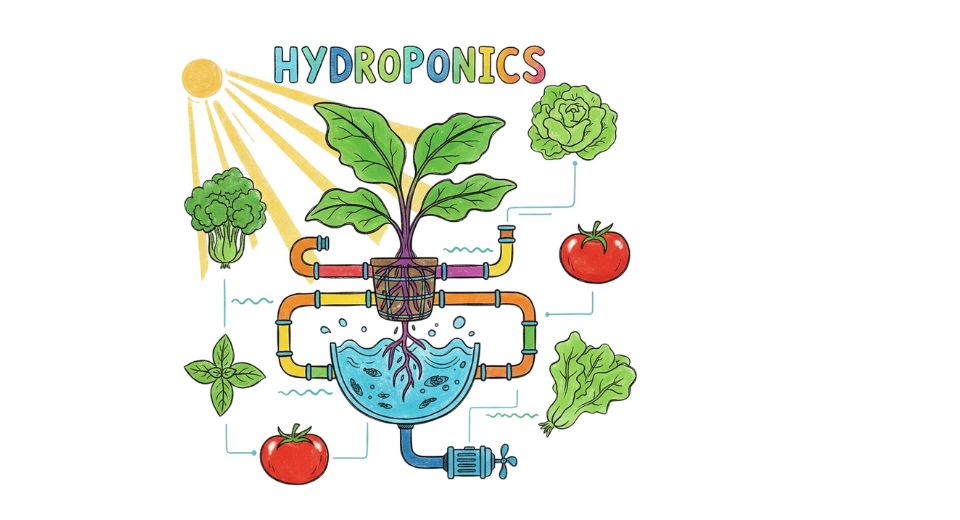
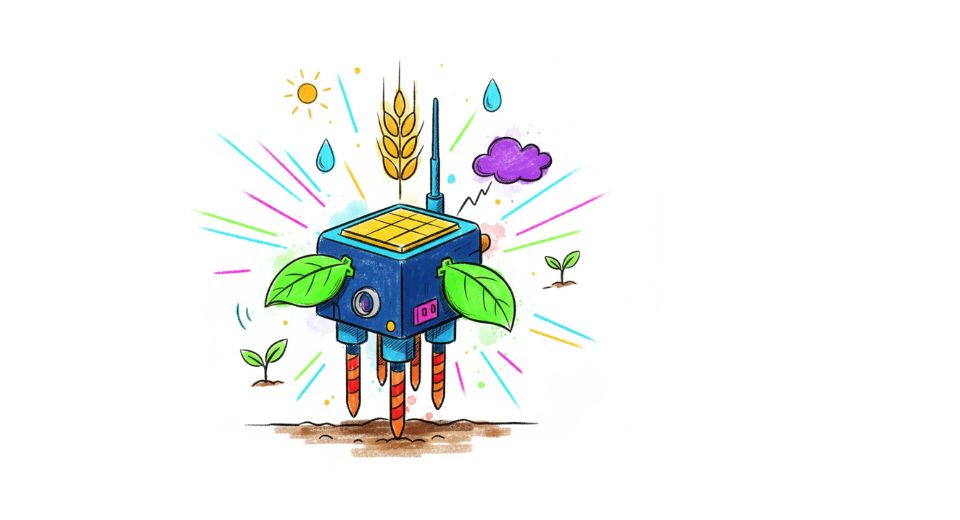
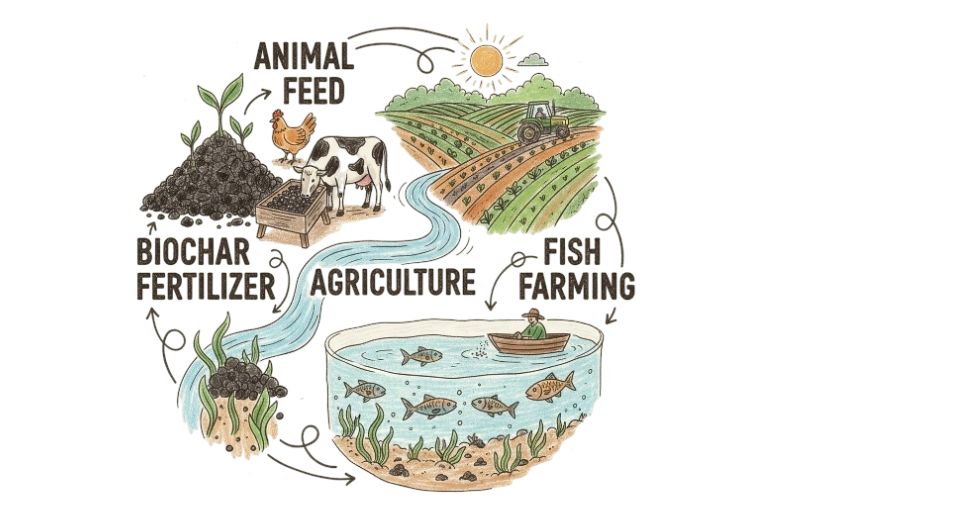
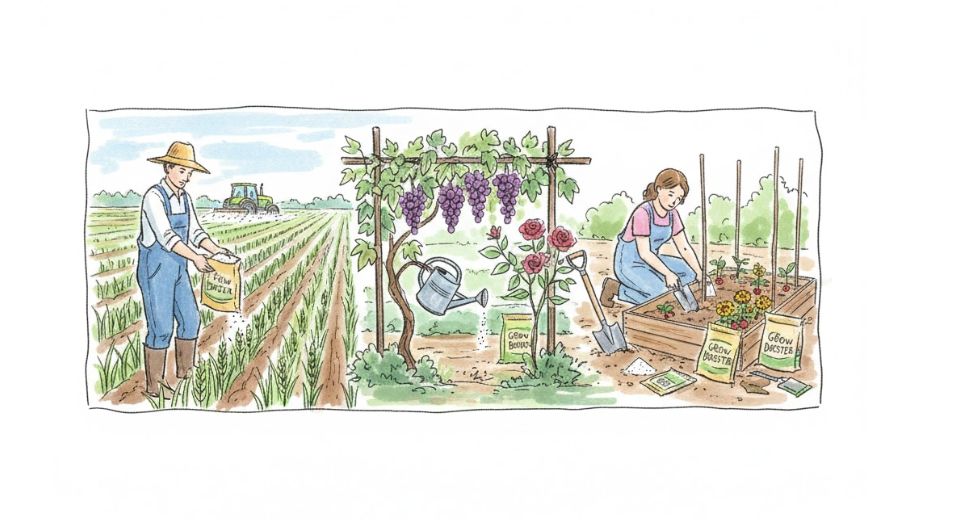

 US: +1 3023308252
US: +1 3023308252






